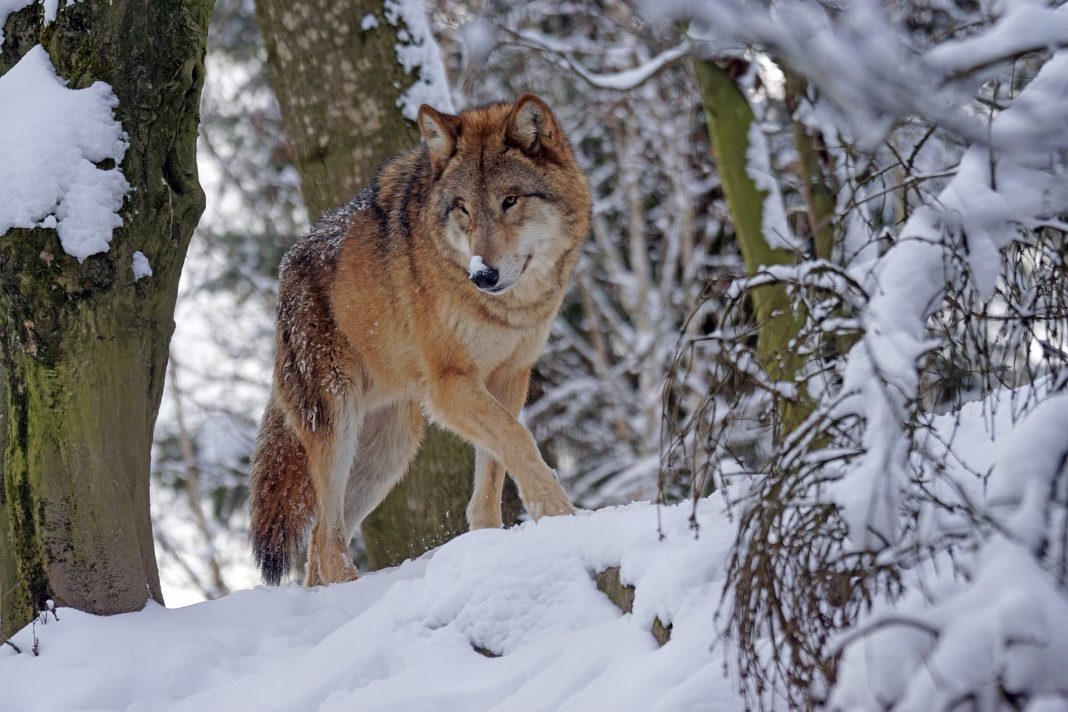Oregon Department of Fish and Wildlife (ODFW) is opening the door to wolf hunting and trapping. ODFW proposed a new wolf plan to manage the increasing number of wolves in the state. Biologists counted 137 wolves this winter which was a 10% increase from last year. With the increased number of wolves, have come more livestock depredation incidents.
ODFW released the following:
ODFW released its draft proposed Wolf Conservation and Management Plan today at www.odfw.com/wolves
The Fish and Wildlife Commission is expected to vote on the Plan at its June 7 meeting in Salem.
Once adopted, the Plan will be the third edition of the Wolf Plan, which was first adopted in 2005 after an extensive public process and revised in 2010.
The proposed Draft Plan was written by staff but involved extensive meetings with stakeholders and public comment at several prior Commission meetings. In 2018, the Commission also directed ODFW staff to host facilitated meetings with stakeholders to seek consensus on unresolved issues.
The draft Plan incorporates ideas where consensus was reached, but an agreement was not possible on all topics. See a report on the facilitated meetings’ outcomes here.
“Wolf management is a polarizing topic with strong views on all sides, so it’s tough to find consensus,” says Derek Broman, ODFW carnivore and furbearer program coordinator. “But regardless of people’s views on wolves, the wolf population in Oregon is growing in size, the number of packs and packs reproducing while expanding its range.”
Defining depredation might lead to lethal control of wolves and hunting of wolves are the most contentious issues. Staff previously proposed the definition of chronic depredation is three confirmed depredations in a 12-month period. In Phase 2 and 3, a change from the current definition (two confirmed depredations in an unlimited timeframe). Due to feedback from stakeholders at the facilitated meetings, the Draft Plan now proposes two confirmed depredations in nine months in Phases 2 and 3 (so the only change from the current definition is a 9-month time restriction).
Like the original Plan, the Draft Plan would allow controlled take only in Phase 3 (currently eastern Oregon.) When wolves are a major cause of ungulate populations not meeting established management objectives or herd management goals.
ODFW is not proposing any controlled take of wolves at this time. But believes regulated hunting and trapping needs to remain a tool available for wolf management. Any proposal for controlled take of wolves would require Commission approval through separate planning and hunt development process.
Other major topics addressed in Plan include:
- Wolf-livestock conflict, including an expanded section on the latest non-lethal tools and techniques for reducing conflict.
- Wolf interactions with native ungulate populations, including annual ungulate population estimates before and after wolf establishment. Elk, wolves’ primary prey, have increased in some units with wolves and decreased in others. However, interpretation of the impact of wolf predation on elk is confounded by management efforts to reduce elk numbers in units where they are over management objective or to minimize conflicts with elk on private land. Mule deer have been below desired levels for more than two decades. Before wolves’ returned to Oregon, with changing land management strategies, invasive weeds, and recent severe weather among the main reasons for their decline.
- Wolf population monitoring and potential conservation threats.
- Strategies to address wolf-human interactions.
Public testimony on the draft Plan will be taken during the June 7 meeting and can also be sent to odfw.commission@state.or.us Emails sent by May 23 will be included with staff proposal as part of the review materials shared with Commissioners prior to the meeting.















